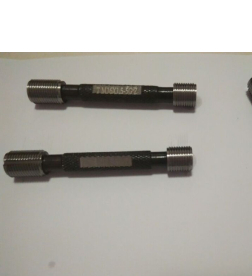Dec . 20, 2024 02:16 Back to list
12v butterfly valve
Understanding the 12V Butterfly Valve
In the world of fluid control, various types of valves serve critical functions. Among them, the butterfly valve stands out for its simplicity and effectiveness. Specifically, the 12V butterfly valve has gained popularity for its versatility in diverse applications, particularly in automation systems. This article explores the design, functionality, applications, and advantages of the 12V butterfly valve.
What is a Butterfly Valve?
A butterfly valve is a type of quarter-turn valve used to regulate airflow or fluid flow. It consists of a circular disc or vane that pivots within the pipe to either block or allow flow. When the valve is fully opened, the disc is parallel to the flow, offering minimal resistance. Conversely, when closed, the disc is perpendicular to the flow, effectively sealing the passage.
12V Butterfly Valve Design
The designation 12V refers to the electric actuator that powers the butterfly valve. These actuators operate on 12 volts of electrical energy, making them ideal for various applications, especially where low voltage is preferred for safety or energy efficiency. Typically, the valve is comprised of several components
1. Body The main vessel, which houses the disc and seat. It is usually made from durable materials like stainless steel, PVC, or cast iron, depending on the intended application. 2. Disc The circular element that rotates to open or close the flow. Its design may vary based on whether the application requires throttling, isolation, or a combination of both.
3. Actuator The electric motor that provides the necessary torque to turn the disc. A 12V actuator allows for remote operation and automation, enabling precise control over flow rates.
4. Seat The sealing surface that ensures a tight closure when the valve is in the closed position. Effective seat material is crucial in minimizing leakage.
Functionality and Operation
The operational principle of a 12V butterfly valve is simple. When electrical current flows through the actuator, it rotates the disc from its closed position to the open position and vice versa. The quarter-turn mechanism allows for rapid operation, making it suitable for applications that require quick flow adjustments. Many models also come with feedback mechanisms to provide real-time information on the valve’s position, further enhancing control in automated environments.
Applications of 12V Butterfly Valves
The 12V butterfly valve's design and functionality make it suitable for a variety of applications
. Some of the most common uses include- Water Treatment Plants These valves control the flow of water through treatment processes, ensuring efficient management and delivery.
12v butterfly valve

- HVAC Systems In heating, ventilation, and air conditioning, butterfly valves regulate airflow to maintain desired temperatures and indoor air quality.
- Hydraulic Systems They are often employed in hydraulic applications for controlling the flow of hydraulic fluid, ensuring optimal operation of machinery.
- Agriculture Used for irrigation systems, they help manage water flow efficiently, contributing to sustainable agricultural practices.
- Marine Applications In boats and ships, they control the flow of water or fuel, providing essential safety and operational functionality.
Advantages of 12V Butterfly Valves
There are several advantages to using 12V butterfly valves
1. Space Efficiency Their compact design allows for installation in tight spaces where traditional valves might not fit.
2. Rapid Operation The quarter-turn mechanism enables quick opening and closing, which is essential in fast-paced environments.
3. Low Power Consumption Operating on 12V, these valves are energy-efficient, reducing operational costs in large systems.
4. Durability Made from robust materials, they can withstand harsh conditions and offer a long service life with minimal maintenance.
5. Automation Compatibility The electric actuators make it easy to integrate these valves into automated systems, providing precise control and reducing the need for manual intervention.
Conclusion
The 12V butterfly valve is a key player in the realm of fluid control technologies. Its efficient design, adaptability, and automation capabilities make it an excellent choice for a variety of industries. As technology continues to advance, the role of butterfly valves, especially in smart systems, will only expand, further enhancing their importance in modern engineering and industrial applications.
-
Precision Manufacturing with Advanced Spline Gauge DesignNewsJul.31,2025
-
Industrial-Grade Calibrated Pin Gauges for Exact MeasurementsNewsJul.31,2025
-
Industrial Filtration Systems Depend on Quality Filter DN50 SolutionsNewsJul.31,2025
-
High-Performance Gate Valve WholesaleNewsJul.31,2025
-
Granite Surface Plate The Ultimate Solution for Precision MeasurementNewsJul.31,2025
-
Granite Industrial Tools The Ultimate Guide for Bulk BuyersNewsJul.31,2025
Related PRODUCTS









